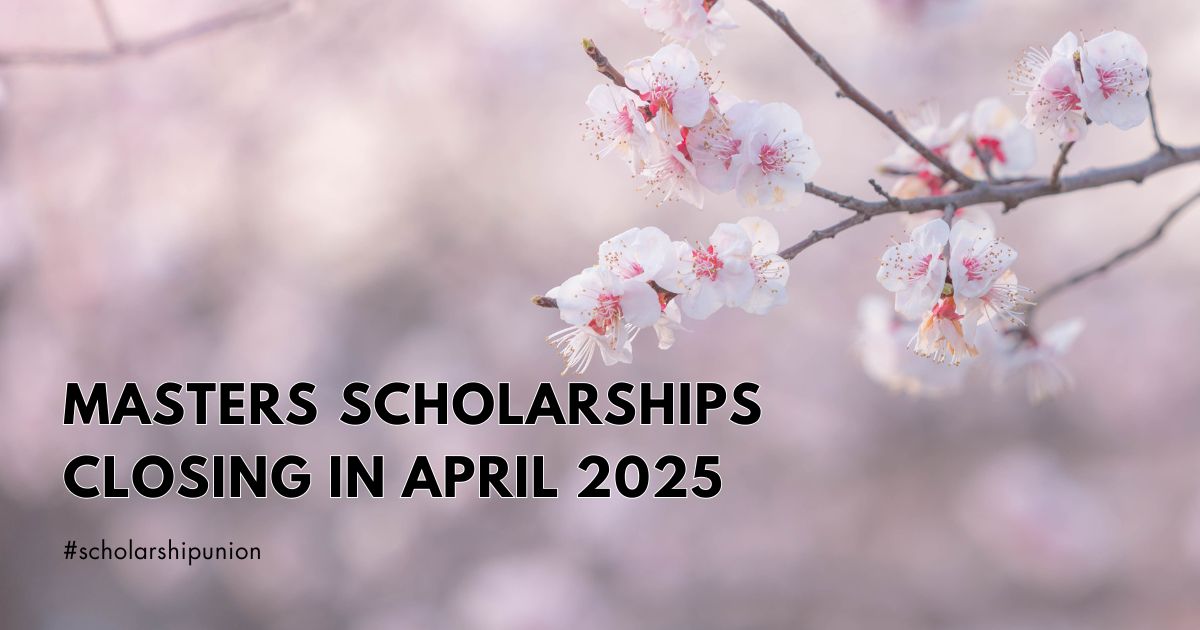In the competitive world of grant applications, the letter of motivation is an important document. It can greatly affect the decision-making process. This letter connects your goals and dreams with the mission and vision of the granting organization. Writing a strong motivation letter for a grant takes careful planning and clear expression. You also need to understand both your goals and those of the institution. A well-crafted letter can differentiate your application from others, showcasing your unique perspective and dedication.
Understanding the nuances of a grant letter of motivation can elevate your application from merely acceptable to outstanding. This is a chance to tell a story. It shows your skills and connects them to the grantor’s goals. By spending time on this document, you show that you are a proactive and thoughtful candidate. You truly understand and value the opportunity given to you.
Table of Contents
Understanding the Purpose of a Grant Letter of Motivation
A grant letter of motivation is not merely a formality; it is a powerful narrative tool. It elucidates the intersection of your professional journey with the objectives of the grant. This letter should show your qualifications and motivations. It should also connect with the main principles of the grantor. It is an opportunity to convey your passion, justify your project, and demonstrate your alignment with the grant’s criteria. Check also: How to Write an Effective Motivation Letter for Scholarships
The purpose of this letter extends beyond merely fulfilling an application requirement. This is your chance to tell a strong story. It should show your vision and the possible impact of your project. This document should show a clear understanding of the grant’s goals. It should explain how your goals connect with those of the granting organization. Being able to clearly show this synergy can greatly improve your chances of success. It can make your application a strong candidate for funding.
Structuring Your Motivation Letter for a Grant
The structure of your motivation letter is paramount. A coherent and logically organized letter enhances readability and showcases your ability to communicate complex ideas effectively. A clear structure helps the reader understand better. It also shows your organisational skills and attention to detail. These traits are important in any job.
Introduction
The introduction should clearly state who you are. It should mention the specific grant you are applying for. Also, give a short overview of your project. Begin with a compelling statement that captures attention and sets the stage for the narrative to unfold. This section should connect with the reader. It will give a brief overview that sparks interest and encourages more reading. Check also: Tips for Writing Statement of Purpose for MBA 2025
An effective introduction balances brevity with impact, making sure to leave a memorable impression. It should convey your enthusiasm and the significance of your project about the grant. By clearly stating your purpose and the importance of your work, you set the stage for a strong argument. This argument will develop in the following sections of the letter.
Body
Aligning with Grant Objectives
This section should delineate how your project aligns with the objectives of the grant letter of motivation. Conduct thorough research to understand the mission of the granting organization. Articulate how your goals are symbiotic with theirs, using specific examples or data where applicable. Showing this alignment is important. It shows that you have taken time to understand and value the grantor’s priorities.
By showing a clear link between your project’s goals and the grant’s mission, you highlight your project’s importance and potential impact. This section should convey a sense of partnership, highlighting mutual benefits and shared values. The more you can demonstrate this alignment, the more compelling your application will be.
Demonstrating Qualifications and Experience
Here, you must provide a detailed account of your qualifications, experience, and past achievements. However, avoid a mere repetition of your resume. Instead, contextualize your experiences to showcase how they uniquely position you to execute the proposed project successfully. Highlight specific skills or experiences that directly relate to the grant’s objectives, offering tangible examples that support your claims. Check also: How to Write a Scholarship Thank You Letter 2025
Emphasize how your background has prepared you to overcome potential challenges and capitalize on opportunities presented by the project. By connecting your past experiences to your future goals, you tell a story of growth and readiness. This can be appealed to the grant letter of motivation committee. This approach not only reinforces your credibility but also illustrates your capacity for impactful work.
Presenting the Project
Describe your project with clarity and precision. Highlight its objectives, methodology, and potential impact. Emphasize innovation, feasibility, and the significance of the project outcomes. This section should convince the grantor of the project’s merit and your capability to deliver results. Be sure to explain the why and how of your project. Show why it is needed and how it can succeed.
In presenting your project, consider addressing potential challenges and your strategies for mitigating them. This proactive approach shows that you are ready. It also builds confidence in your ability to manage the project well. By presenting a well-rounded view of your project, you enhance its appeal and underscore its viability.
Conclusion
The conclusion should reiterate your enthusiasm for the project and the grant letter of motivation, leaving a lasting impression. Express gratitude for the opportunity and reinforce your eagerness to contribute to the field through this grant. This section should encapsulate your commitment and vision, leaving the reader with a sense of your passion and determination. Check also: How to Write a Fulbright Scholarship Reference Letter
A strong conclusion brings together the main points in your letter. It shows why you are a good fit for the grant. It should also provide a clear call to action, encouraging the grant committee to consider your application favourably. By ending on a positive and confident note, you leave a memorable impression that can influence the final decision.
Crafting a Persuasive Narrative
The narrative style of your motivation letter can greatly influence its effectiveness. Employ a persuasive tone, but avoid overstatements. Be authentic and genuine in your expression of passion and commitment. Use active voice and varied sentence structures to maintain engagement. A well-crafted narrative can captivate the reader, making your application stand out in a competitive pool.
Creating a persuasive narrative involves striking a balance between emotion and logic. It is important to show your passion. It is also crucial to back up your claims with evidence and examples. This mix of heartfelt stories and facts can make a strong case. It will connect well with the grant committee.
Addressing Potential Concerns
Preemptively address any potential concerns the grantor might have. This could involve acknowledging limitations and providing strategies to mitigate them. Demonstrating foresight and problem-solving skills can enhance your credibility. By thinking ahead about questions or concerns, you show that you have carefully thought about the project’s challenges. You are ready to face them directly.
Addressing potential concerns also allows you to showcase your adaptability and resilience. By presenting well-thought-out solutions, you reinforce your capability as a project leader. This approach not only builds trust with the grantor but also highlights your proactive attitude and commitment to success.
Tailoring the Letter
Each grant letter of motivation application is unique. Tailor your motivation letter to reflect the specific grant and its requirements. Avoid generic statements and ensure that every element of the letter is relevant to the grant’s objectives. Personalization demonstrates your attention to detail and genuine interest in the opportunity, distinguishing your application from others. Check also: Need Based Scholarships | A Complete Guide to Understand 2025
Tailoring your letter involves understanding the nuances of the grant’s focus areas and aligning your narrative accordingly. This customization should extend to language, examples, and the emphasis placed on certain aspects of your project. A tailored letter not only reflects your dedication but also maximizes the relevance and impact of your application.
Language and Style Considerations
A motivation letter for a grant letter of motivation should adhere to formal writing conventions. Use sophisticated vocabulary judiciously, ensuring clarity is not compromised. Maintain a professional tone throughout, and avoid colloquialisms or overly casual language. This approach respects the formal application process. It also boosts your credibility as a candidate.
Effective language and style are essential in conveying your message clearly and professionally. Strive for precision and conciseness, eliminating unnecessary jargon that might obscure your key points. A clear and well-written letter shows your communication skills and attention to detail. These qualities are important to grant letter of motivation committees.
Proofreading and Feedback
Before submission, meticulously proofread your letter to eliminate grammatical errors and ensure coherence. Consider seeking feedback from peers or mentors who can provide an objective critique and offer suggestions for improvement. Fresh eyes can catch issues you might overlook, helping to refine your letter into a polished and persuasive document. Check also: Tips for Writing Statement of Purpose for MBA 2025
Incorporating feedback can enhance the clarity and impact of your motivation letter. Constructive criticism from experienced colleagues can offer new perspectives and insights, leading to a more compelling narrative. This iterative process not only improves the quality of your application but also increases your chances of success.
Real-World Examples and Case Studies
Examining successful motivation letters can provide valuable insights. Analyze case studies of past grant recipients to understand effective strategies and common pitfalls. This analysis can inform your approach and inspire innovative ways to present your case. By learning from the successes and mistakes of others, you can refine your strategy and enhance your application’s effectiveness.
Real-world examples offer a practical understanding of what works in grant letter of motivation applications. They provide templates for structure, content, and tone, offering guidance on how to craft your letter. By looking at these examples, you can create a unique story that connects with the grant committee.
Final Thoughts
The art of writing a motivation letter for a grant lies in balancing personal passion with professional acumen. It requires an eloquent articulation of your vision and a strategic alignment with the grantor’s mission. By spending time and effort on this document, you improve your chances of getting the grant and moving your project forward. The effort you put into this letter can pave the way for new opportunities and collaborations.
In conclusion, a grant letter of motivation letter of motivation is not just a requirement. It is a chance to share your vision and build a partnership with the granting body. Approach it with diligence, creativity, and integrity, and it can serve as a powerful catalyst in your professional journey. By effectively communicating your passion, qualifications, and project potential, you position yourself as a deserving candidate ready to make a meaningful impact.
Frequently Asked Questions (FAQ)
How should I structure a letter of motivation for a grant application?
Begin with a formal header containing your contact information and the date, followed by the recipient’s details. Start the letter with a salutation addressing the specific person or committee. The introduction should state the purpose of your application and the specific grant you’re applying for. In the body, elaborate on your academic background, relevant experiences, and how they align with the grant’s objectives. Conclude by expressing appreciation for the opportunity and your eagerness to contribute.
What content is essential in a motivation letter for a travel grant?
When you apply for a travel grant, clearly state your current academic position. Also, mention the specific event or purpose for which you need funding. Please explain how this opportunity relates to your field of study. Also, describe the expected benefits. These may include gaining knowledge, making connections, or advancing research. Demonstrating a direct connection between the travel and your academic or professional development strengthens your application.
Are there specific formats to follow for a travel grant motivation letter?
Adopt a professional format similar to formal business letters. Use a clear and easy-to-read font. Organize the content into separate paragraphs. Start with an introduction that states your purpose. Then, write a body that details your qualifications and the importance of the travel. Finally, include a conclusion that summarizes your request and shows your gratitude. Consistency and clarity are key to conveying your message effectively.
How can I effectively convey my motivation for a postdoctoral grant in my letter?
Please explain your research interests. Describe how they match the focus areas of the grant and the hosting institution. Provide examples of your previous work, publications, or projects that demonstrate your expertise and commitment. Clearly express how the postdoctoral opportunity will further your research goals and contribute to the academic community.
How long should a motivation letter for a grant be?
A one-page letter is standard, allowing you to present pertinent details without overwhelming the reader. Be succinct, ensuring each sentence adds value to your application. Overly lengthy letters may dilute your key messages and lose the reader’s interest.
What is a grant and how does it work?
A grant is a way for the government to fund your ideas and projects. It helps provide public services and boost the economy. Grants support critical recovery initiatives, innovative research, and many other programs listed in the Annual Publication of Assistance Listings (APAL).
What is the difference between a grant and a fund?
The term grant is typically used to describe funding linked to short-term project funding or the one-off provision of money. ‘Funding‘ is the overall term (grants are one type of funding) and is sometimes a term used to describe longer-term agreements. These are not legal terms.
⚠️ Disclaimer
Scholarship Union shares publicly available scholarship opportunities for informational purposes only. We are not affiliated with or endorsed by any listed institution unless clearly stated.
Listings may come from public sources or user submissions. We do not guarantee their accuracy, completeness, or availability.
To report issues or request updates, please contact us here.
Discover more from Scholarship Union
Subscribe to get the latest posts sent to your email.









